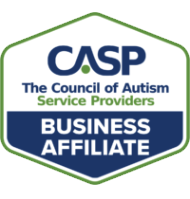Searching for ways to improve billing and collections processes? Whether you are a solo BCBA or have multiple therapists, find suggested best practices here.
ABA Therapists and Providers Billing and Collections Best PracticesEarly in my accounting management career, I worked for a fantastic CFO who always used the mantras “bill early and often” and “dial for dollars.” These phrases have stayed with me throughout my career, and I have been able to apply them across multiple industries. In this 2-part blog series, we will discuss how it applies to ABA Therapy Billing and Collections best practices. Be sure to check back next week for the second part and more great suggestions!
Part 1: Bill Early and Often
One of the keys to billing for services performed is to set up consistent deadlines. Whether you are a solo BCBA or have multiple providers working for you, you need a deadline for timekeeping.
- Weekly deadlines for turning in timesheets or inputting time into a computer timekeeping system is a best practice to consider. Routinely having timekeeping updated despite any payroll and billing deadlines allows providers to successfully complete the necessary discipline of providing the data you need to pay them as well as bill your funding sources. It also can help decrease the time you spend chasing down payroll information when it’s time to pay your employees or contractors.
- Having timekeeping turned in on a weekly basis will also allow you to bill weekly, despite having a separate pay period cycle. It’s a myth to think that you can only bill monthly; furthermore, for insurance billing you will need the full picture of the week in order to bill accurately. This would include all RBT’s and Supervision with a given client. This way you can apply the T codes (CPT3 Billing Codes) and billing rules to your input (e.g., combining units where applicable and billing Supervision only during overlaps).
- Despite the deadline you enforce for timekeeping, you will always run into the occasional “late time” from a provider. It’s imperative that you have a system in place to communicate this information between payroll and billing. Many times paying the employee for late time is considered, but following up on billing the additional hours to the funding source can easily be forgotten. Late time can be problematic for insurance billing for a variety of reasons, so it’s best practice to encourage providers to meet the specified deadlines.
 Set up the simplest process for the providers to report hours worked with clients based on type of service performed.
Set up the simplest process for the providers to report hours worked with clients based on type of service performed.
- It is my personal opinion that interpreting how the new T codes work is not the job of the provider. It should be left to the back office team. Let the providers do what they do best clinically and let the back office team rise to the occasion and do what we do best with scrubbing the timekeeping to prepare for billing (e.g., determining when to use the initial codes for the first 30 min of the day, converting hours to units when applicable, etc.)
Develop your initial “billing scrub” process with proper checks and balances.
- If you are using handwritten time sheets, determine if you will hand write the changes or key input into an Excel spreadsheet prior to inputting to your billing software.
Always have a way to “tie out” all of your data as you make changes and set up reasonableness checks. - If you are using an electronic timekeeping system, do the following accuracy checks.
- Look for hours that are over 12 in a day, those typically relate to an am/pm issue (e.g., provider uses 1 pm as the start time and 2 am as the end time, this will add an additional 12 hours to their time and can be a costly mistake for both payroll and billing).
- Look for non-billable time that has been coded as billable and, vice versa, billable time that has been coded non-billable. If you are exporting data to Excel, you can use filters to set up your review.
- Look for missing information that will be needed during billing (e.g., service locations).
- Look for providers using the wrong codes for the types of services they perform (e.g., RBT using BCBA codes).
Set up your authorization tracking process to ensure that hours scheduled and provided are not going over the allowed authorization and that providers are only performing services that have been approved.
- Obtaining timely authorizations is critical to ensure that services are reimbursed. Establish a policy to only work once the authorization is provided from the funding source, including waiting for the ongoing services auth to be in place after the initial assessment.
- Maximize your authorized units by understanding how each funding source is using the new T codes or other billing codes for ABA Therapy. Read our blog on Maximizing the Initial Assessment Authorization for tips that can be applied to ongoing services as well.
- Set up processes to track the expirations and turn in timely treatment reports for concurrent approvals to support no gaps in service. Be aware of plan rules for back dating auths.
Continue the detailed billing scrub process to prepare for input to your billing software or manual 1500 forms.
- Review timekeeping records against authorized hours as well as “rules” by each insurance plan.
- How are the initial codes being applied? (e.g., is 0364T used for the first 30 min of the day or the first 30 min of the auth)
- Is overlap billing allowed? (e.g., can Supervision be billed at the same time as RBT; be sure to mark the RBT time non-billable as applicable)
- What are the unit conversions? (e.g., are you working with a code that is hourly, 30 min units, or quarter hour units)
- Combine like units in a given day per client as applicable. Take into account separate service locations.
- Bill proper service locations based on where service was provided (e.g., home, community, clinic/office, or school)
- Is this a new client? (e.g., are you working with 0359T untimed code authorization and do you have all the hours you need to review for the proper total billed value for this code).
- Be aware of proper rounding rules. You don’t want to overbill nor over-utilize toward an authorization and end up short at the end of the period.
- Know the requirements for listing rendering provider NPI and/or when to use the group NPI on claims or input to billing software.
- Prepare additional information needed to reflect on claim forms or online systems (e.g., explanation of multiple providers in same day).
Set up timelines for completing the billing scrub and final billing.
- We all know that time passes far too quickly. Set up timelines to keep to the Bill Early and Often best practices. Accurate, timely billing will lead to cash in the bank. Cash in the bank will allow you to continue to fund the needs of your business.
- Again, always use a “tie out” process to ensure you have completely billed all that you intended—not over, not under.
- Remember “late time” and have a way to document and bill properly.
Be aware of options for sending claims.
- Most insurance companies allow electronic billing for ABA Therapy. Know the accurate EDI number to set up in your billing software.
- Use dedicated Fax #’s for ABA when allowed.
- Mail claims where necessary and include copies of single case agreements or authorizations on accounts with issues as instructed.
Update any reporting and prepare to start the process again for the next deadline.
- Do you need to run reports from your billing software to post to your accounting software?
- Do you need to run Aging reports for management or for your own review?
Follow these simple guidelines and it will make your billing much easier. Next week we will continue and discuss the Dial for Dollars disciplines that will lead to effective collection practices. If you have any questions, please feel free to contact me at anytime, either by leaving a comment here, emailing, finding me on LinkedIn, Facebook, or Twitter!





